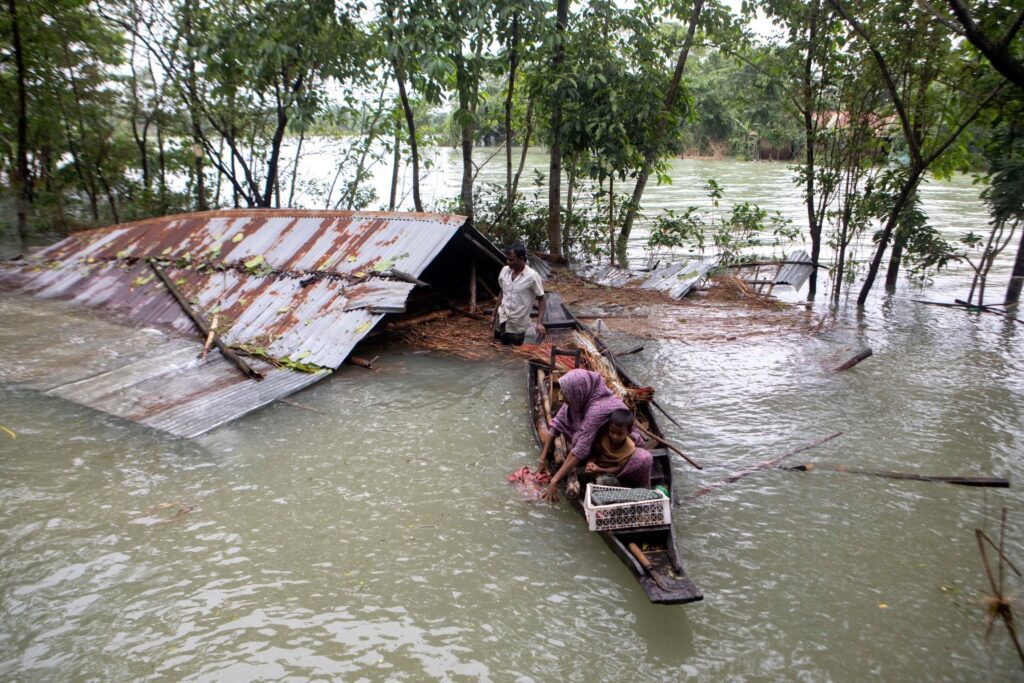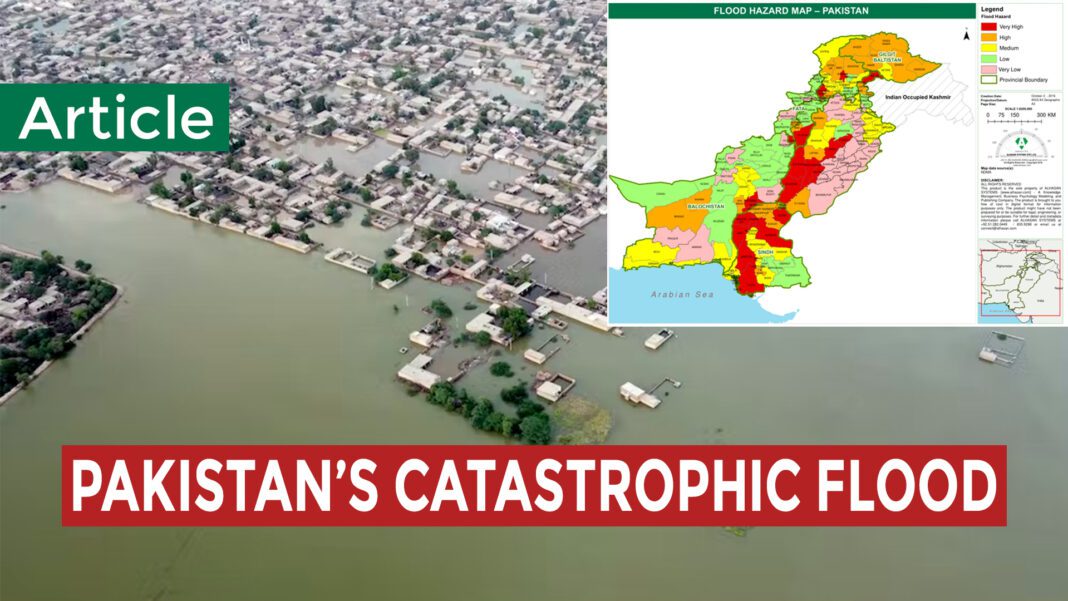Introduction
This year Pakistan has received nearly twice of usual monsoon rainfall. It has affected more than 30 million people, about 15% of the population. Sindh and Baluchistan are heavily affected, and about one-third of the country is in water. A devastating flood has washed away roads, homes, and crops, leaving a trail of deadly destruction across Pakistan.
Pakistan has faced a setback of 10 billion dollars, and more than 800 km of the road network has been affected. Pakistan calls on the world to speed up aid efforts after devastating floods have killed more than 1000 people, with more than 3 lac displaced. Alongside death tolls, countless people have been wounded and suffering from water and waterborne illnesses.
Possible Causes of Flood
Despite having the most extensive irrigation system, Pakistan still faces this humanitarian disaster and cannot tackle it. Most of the Pakistani population lives near the Indus River, which has caused a lot of damage to the people and their properties. Thousands of villages are submerged in water due to unprecedented rainfall.

Landslides have blocked the roads. Poor developmental planning is also the cause. By constructing on river banks, we are just hindering the natural flow of water. There are agricultural areas on flood plains and flood-sensitive areas that shouldn’t have been there. According to estimates, two million acres of cultivated land were underwater, which has caused a food shortage in large number.
Due to the intense heat and heavy monsoon, the glaciers have started melting rivers which caused a lot of damage to people living near coastal areas. Unfortunately, there are not enough dams in Pakistan to store water and reservoirs.
Tarbela and Mangla dams were full, and the lack of dams in northern areas has caused colossal damage. Torrential rain led to flash floods with vast volumes of water pouring into the Indus River, which flows down the middle of Pakistan, bringing flooding along its length. Over one million houses are destroyed.
Climate Change and Flood
According to the global climate risk index, Pakistan is in the 8th spot in the most vulnerable country because of climate change. This changing climate will make the problems even worse now for Pakistan. It will cause mountain ice to melt quicker- a significant concern in Pakistan, home to more glaciers than any country outside the polar region.
Flash submerging from the surplus of glacial lakes can be devastating, mainly in the country’s mountainous regions. This year an intense heat wave was also seen in most countries, followed by colossal monsoon rainfall. It has been stated since June, but it was only in late July that the strength and scope became clear.
Unfortunately, our government is never prepared for this. We have experienced floods before. In the past, a flood in 2010 displaced 20 million people; however, this flood has caused destruction four times compared to 2010. The two dams (Tarbela and Mangla) were built during the Ayub Khan Period, but after 50 years, no government has made an effort to build more dams, and we are facing its consequences, particularly in the northwest.

Political and Economic Instability
Right now, the country is facing political and economic instability, and these floods have added fuel to the fire. Many government departments are shifting burdens onto the other government departments instead of taking responsibility, which has done a lot of harm in preparation for the floods. We could have prepared better for these floods if our priorities had been better aligned. If there were early warning systems and we could have evacuation plans ready, the destruction would be less.
Eventually, failed government policies and mismanagement are the root causes of what we face today. Weak agricultural production, dependence on energy imports, and the nonexistence of external investment contribute to the spiteful cycle of underdevelopment. Meanwhile, Pakistan needs an adequate number of dams, resulting in flooding yearly during the monsoon season.
Conclusion
To avert this catastrophe in the future, we need to bring reforms to our system. Changes should be made at the provincial and district level. To deal with these disasters, all the resources must be provided to disaster management authorities. If we haven’t changed our ways, it will create greater havoc on what we are facing now.
Small practices like the construction of dams, an increase in plantations, dewatering drives, and other equipment can go a long way in averting deadly circumstances during heavy floods in the rainy season. We can reduce the disastrous impact of flash floods presently occurring in the country to a great degree, if not eliminate them.
The author is a recent graduate from the international Islamic university of Islamabad and has done a BS in International relations.






